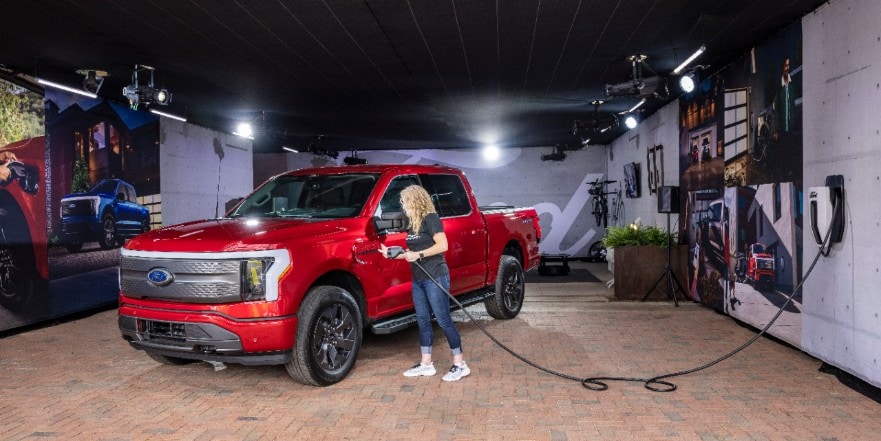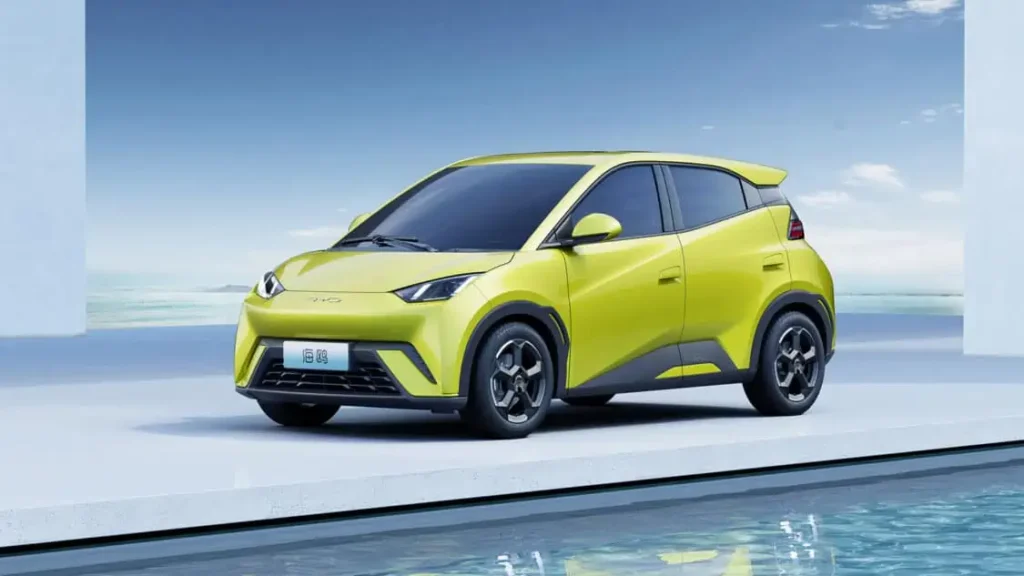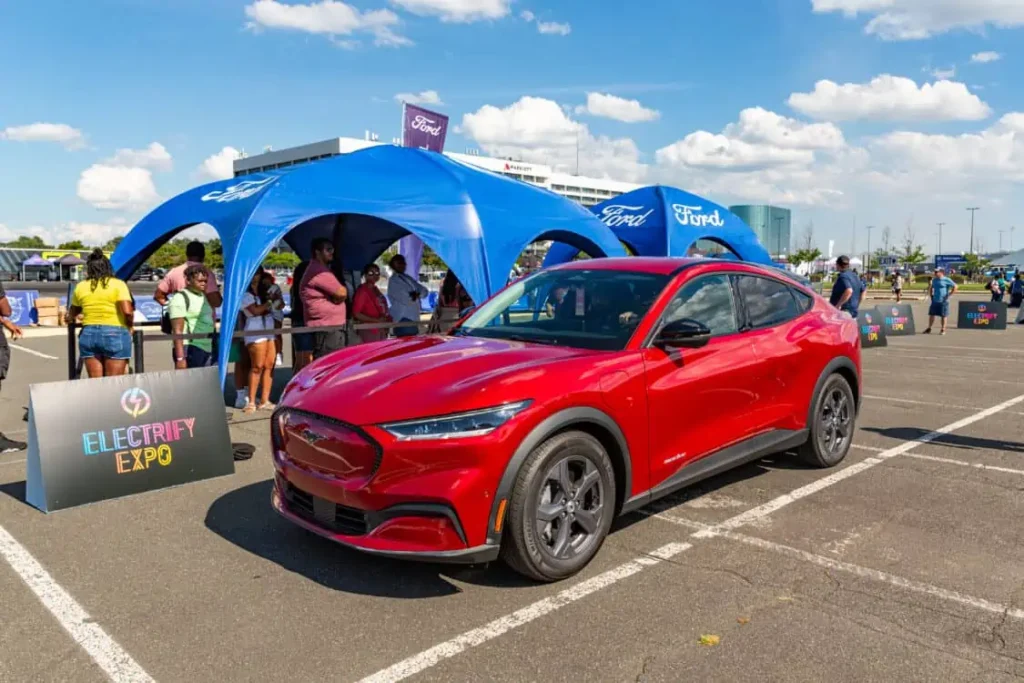China Files WTO Complaint About U.S. EV Trade Barriers
Today, March 26, 2024, China filed a complaint at the World Trade Organization (WTO), claiming that the United States has implemented “discriminatory requirements for electric vehicles subsidies,” according to a report by the Associated Press (AP). Does this mean that China will enter the American electric vehicle (EV) market soon? See below.
The Federal Electric Vehicle (EV) Tax Credit
Starting this year, changes to U.S. EV tax credit eligibility have significantly decreased car buyers’ choices in the U.S., having an impact on the global automotive industry’s landscape. Under the new U.S. rules that took effect at the beginning of 2024, only 13 of the over 50 EVs on sale in the U.S. were eligible for the tax credit. This was a decrease from about two dozen EV models in 2023. Automakers have been scrambling to source parts that would make their models eligible for the credits. Under new provisions of the 2022 Inflation Reduction Act, car buyers in the United States may receive tax credits ranging from $3,750 to $7,500 for the purchase or lease of a qualified clean energy vehicle. In January 2024, the tax credit became a point-of-sale discount, significantly increasing EV sales.
The federal Electric Vehicle (EV) tax credit represents one of the United States government’s most ambitious efforts yet to encourage the adoption of electric vehicles. Aimed at reducing the country’s carbon footprint and bolstering the domestic EV market, this initiative allows new car buyers the opportunity to qualify for a credit of up to $7,500. This credit applies to those who purchase a new, eligible battery electric vehicle (BEV), plug-in hybrid electric vehicle (PHEV), or fuel cell electric vehicle (FCV). Furthermore, there’s an appealing incentive for buyers in the pre-owned market as well; purchasers of qualified used electric vehicles (EVs) or FCVs from a licensed dealer, with a sale price of $25,000 or less, are entitled to claim 30% of the sale price, up to a maximum of $4,000.

Federal EV Tax Credit Prohibits China and Other “Foreign Entities of Concern”
However, there’s a catch that reflects the geopolitical underpinnings of this climate legislation: vehicles only qualify for these credits if their critical minerals or battery components are not sourced from “Foreign Entities of Concern,” companies based in China, Russia, North Korea, or Iran. This decision, as expressed by the Chinese Commerce Ministry, is seen as a discriminatory policy that ostensibly targets climate change but effectively sidelines Chinese products. The ministry argues that such measures distort fair competition and disrupt the global supply chain for new energy vehicles.
The Chinese Electric Vehicle Industry: A Global Game Changer for US Automakers
Over the last few years, the emergence of China as a powerhouse in electric vehicle (EV) production has reshaped the global automotive industry. With companies like BYD leading the charge and setting unprecedented sales figures, it’s no longer just a question of if the Chinese EV industry will impact the US market – the impact is imminent, and potentially may prove destructive for some American automakers if US companies don’t adapt swiftly to meet the growing competition.
BYD’s Seagull: A Symbol of First-Rate Efficiency and Cost-Effectiveness
Amidst the rising tide of global electric vehicle competition, one name that has been making waves is the BYD Seagull, a car that’s garnered significant attention for its remarkable combination of affordability and quality. Priced under $10,000, it’s already a disruptive force in the global market, challenging not only direct counterparts from the United States but also setting its sights on premium offerings from the industry’s leading competitors.

The Seagull symbolizes a new beginning for many in the EV sector. It offers the promise of electric motoring not just to the select few but to the masses, addressing a crucial barrier to widespread EV adoption – price. Ford and others have recently reported working on their own low-priced, small EVs as a result.
BYD Surpasses the 3 Million Sales Target: A New Standard in Global NEV Sales
At a time when the world is transitioning toward a sustainable tomorrow, BYD has managed to not just follow the green trend – it’s leading it. By surpassing the 3 million annual sales mark in 2023, BYD has become the global New Energy Vehicle (NEV) champion two years in a row. The numbers speak for themselves, delineating a paradigm shift where EVs are no longer a niche market of eco-conscious consumers, but a mainstream, high-volume reality. In China, the term new energy vehicle (NEV) describes automobiles that are fully or predominantly powered by electric energy, which include battery electric vehicles (BEVs), plug-in hybrid electric vehicles (PHEVs), and fuel cell electric vehicles (FCEV). BYD’s Seal, at $49,888 for the entry-level version, is a compelling choice.
What These Sales Figures Mean for US Automakers
For US automakers, these sales figures are not just statistics; they’re harbingers of a potentially seismic shift in the industry landscape. The rapid expansion of the Chinese EV sector raises serious questions about the competitiveness and viability of American automakers in the long run.
This isn’t merely conjecture but a concern echoed by many industry and political leaders who worry that unless significant action is taken to support the domestic electric vehicle sector, the US could find itself losing its automotive manufacturing dominance to Beijing – a city that’s quickly becoming synonymous with cutting-edge technology and innovation in the context of electric mobility.
Threatening American Jobs and Economy
The stakes are high. The American automotive industry has long been a key economic pillar, contributing to job creation, innovation, and global influence. An EV industry dominated by China would mean not just a loss of market share, but potentially a loss of American jobs and economic prosperity.
Automotive giants like Ford and General Motors face a dual challenge of keeping pace with the innovation in the Chinese electric vehicle industry while simultaneously navigating a shifting geopolitical landscape that has seen trade and political tensions escalate between the US and China.
The Future of US Automakers: Blending Heritage with Innovation
Despite the formidable challenge posed by the rise of Chinese EVs, American automakers are not without their own rich heritage and a legacy of innovation. It’s imperative for these companies to leverage their strengths and redirect their focus toward low-priced electric vehicles.
This transformation may include a shift in manufacturing strategies, increased investments in research and development, and coalescing around a unified approach to electric vehicle adoption. It also requires a harmonious relationship with policymakers, where incentives, legislation, and infrastructure work in tandem to facilitate a robust electric vehicle market in the United States.
Global EV Market More Important than US EV Market, Ford CEO Notes
Ford’s acknowledgment of the global challenge posed by Chinese electric vehicle (EV) manufacturers, particularly BYD, underscores a pivotal moment in the competitive landscape of the global automotive industry. During the 2024 SIEPR Economic Summit’s kick-off keynote, Ford CEO Jim Farley candidly expressed concerns about the unprecedented competition in the global EV market coming from China.
“The American EV market is currently ‘alive and well,’ but the biggest threat comes from China,” Farley remarked, highlighting that “We’ve never seen a competitor like this before.” This statement underlines the unique position of Chinese companies, which have notably achieved vertical integration in their production processes. Unlike Ford and other U.S. automakers, who depend on various suppliers for essential car parts such as batteries and silicon carbide inverters, companies like BYD have internalized these operations.
“BYD is totally vertically integrated. It’s so amazing [and represents] a new fitness test for our company and for our industry. Their scale is something we’ve never seen,” Farley admitted. Despite Ford being the second-largest seller of EVs in the U.S., and its F-150 Lightning becoming America’s best-selling electric truck in 2023, Farley recognized that “iconic legacy companies like Ford have really no sustainable advantage” in the intensifying global race for EV dominance. He concluded that success would hinge on the ability of Ford and other automakers to innovate and economize, setting the stage for a dynamic and uncertain future in the global EV market. Ford recently announced working on an affordable electric SUV and truck in response to the threat.

Booming US EV Industry
While the focus right now is on the Chinese EV industry’s growth, it’s essential to note that the US EV industry is also experiencing its boom. The Biden administration’s focus on renewable energy and infrastructure development has injected new life into the American electric vehicle industry, providing a favorable environment for growth and innovation. With a historic allocation of billions, including the ambitious $5 billion National Electric Vehicle Infrastructure (NEVI) Formula Program outlined in the $1.2 trillion Infrastructure Investment and Jobs Act, the federal government’s NEVI initiative aims to create a robust network of charging stations.

Primarily, the NEVI funding targets the establishment of EV charging “corridors” along major freeways, fostering a future where electric vehicle (EV) ownership is not just viable but convenient for the American car owner. This substantial investment indicates a significant shift towards sustainable transportation, reflecting the government’s commitment to reducing carbon emissions and combating climate change. By facilitating the creation of extensive charging infrastructure, the initiative addresses one of the major barriers to EV adoption, range anxiety, thus accelerating the nation’s transition to cleaner, greener modes of transport.
The World Trade Organization (WTO) Has Reduced Trade Barriers and Increased Global Commerce
In the rapid evolution of the automotive industry as it shifts from internal combustion engines (ICE) to electric vehicles, the role of the World Trade Organization (WTO) has never been more critical. As an intergovernmental organization headquartered in Geneva, Switzerland, the WTO stands at the forefront of regulating and facilitating international trade. With 164 member states, representing over 98% of global trade and GDP, the organization’s influence stretches across the entirety of the global economy. It provides a platform for negotiating trade agreements aimed at reducing or eliminating tariffs, quotas, and other restrictive measures, thereby fostering an environment conducive to the free flow of goods, services, and intellectual property.

The WTO’s commitment to nondiscrimination ensures a level playing field for all trading partners, allowing for exceptions only in the interests of environmental protection, national security, and other critical goals. Beyond its role in forging agreements, the WTO also plays a vital part in dispute resolution, enforcing adherence to established trade agreements and resolving conflicts that arise. This mechanism has proven instrumental in maintaining global economic stability and promoting mutual respect among nations.
The Rise of the Chinese Electric Vehicle Industry Presents a Formidable Challenge to US, Other Automakers
The race to dominate the global electric vehicle market is on, and the stakes have never been higher. With the right strategies, investments, and policies, American automakers can turn the tide in their favor, reclaiming their position as leaders in the automotive landscape. The advancement of electric vehicles isn’t just a question of technology; it’s an economic and geopolitical imperative that requires the undivided attention and concerted effort of all key stakeholders. The Chinese EV industry may be a threat today, but for American automakers willing to adapt and innovate, it could very well be the catalyst for a more prosperous and sustainable future for the United States and its economy.
EVinfo.net believes low-priced EVs have been notably missing from the American EV market from the beginning, slowing American EV adoption. This may very well be the end of that problem, as OEMs scramble to compete with Chinese EV companies on cost. It is unclear what action the WTO will take about China’s complaint, and how American OEMs and political leaders will respond. It may mean the end of America’s trade barriers against low-priced Chinese EVs, which have prevented China from entering the American EV market. Only time will tell what will happen, however American OEMs are encouraged to work harder at lowering EV prices. Lower EV prices will make things easier on American drivers wanting to drive electric, as most EV models so far have been luxury models. EVinfo.net encourages all OEMs to lower prices, which will drive US EV adoption forward

Electric Vehicle Marketing Consultant, Writer and Editor. Publisher EVinfo.net.
Services